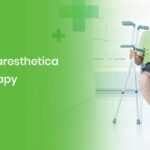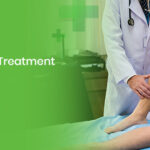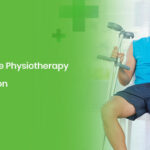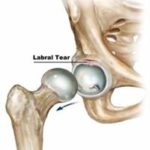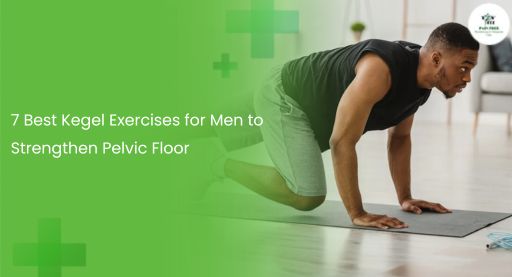What Are the Top 5 Mistakes After Knee Replacement?
Now that you’ve had knee replacement surgery, congratulations! Hold on, though, since rehabilitation is more than just relaxing and hoping for miracles. It is about knowing what to do and what not to do, that’s about it. If the pain is persistent or your mobility isn’t returning as you had planned, you may be making one of the top 5 mistakes that people make after having a knee replacement.
Let’s examine some typical post-operative mistakes and how to avoid them to maintain the strength and satisfaction of your new knee.
1. Skipping Physical Therapy Big No-No
Believe it or not, some folks think they can just wing it. Maybe you’re tempted to rest all day, thinking it’s best for healing. But here’s the kicker: physical therapy is everything after knee surgery.
Why It Matters:
- Keeps scar tissue from tightening up
- Builds strength and flexibility
- Prevents long-term stiffness
Missing even a few sessions can throw a wrench in your progress. Stick with your PT like your recovery and your health care depend on it because they do.
2. Overdoing It Too Soon Slow and Steady Wins
This one’s tricky. After a few good days, you might feel like Superman. But pumping the brakes too much too fast is one of the top 5 mistakes after knee replacement that people regret later.
Watch out for:
- Climbing stairs like a champ too early
- Walking long distances before you’re cleared
- Lifting heavy stuff thinking you’re back to normal
Your body needs time to adjust. Think marathon, not sprint.
3. What Can I Never Do After Knee Replacement?
Great question! There are a few things that should stay off-limits probably for good.
Here’s what to avoid:
- High-impact activities like running or jumping
- Twisting motions (say no to that intense game of tennis)
- Kneeling on hard surfaces ouch, not your knee’s favorite
- Crossing your legs for long periods
Your new knee’s tough, but it’s not invincible. Treat it with care and it’ll treat you well in return.
4. What Is the Biggest Complaint After Knee Replacement?
Now this one pops up all the time. You’d think pain would be the top complaint, right? Nope it’s actually stiffness and limited range of motion.
Why this happens:
- Not moving enough during recovery
- Skipping those bending and stretching exercises
- Sitting or lying too long in the wrong positions
Pro tip? Get moving early and often (with guidance, of course). That new joint was built to bend, so let it.
5. Ignoring the Doctor’s Advice Rebel With a Cause?
Tempted to ditch the walker early or pop a few extra pain pills? Bad idea. Your surgeon’s advice isn’t just a friendly suggestion, it’s tailored to your recovery.
Common blunders include:
- Stopping medications too early
- Skipping follow-ups
- Changing rehab routines without asking
Sure, you know your body but your surgeon knows knees. Work as a team, not against each other.
Can Too Much Walking Damage a Knee Replacement?
Ah, yes the fine line between being active and going overboard. Walking is essential, but too much too soon? That’s asking for trouble.
Signs you’re overdoing it:
- Swelling that won’t go down
- Persistent pain after walking
- Clicking or instability in your knee
Balance tip:
Use a pedometer or fitness tracker. Start small, and increase your steps weekly as advised by your physio. Think of it like seasoning food just enough is perfect, but too much? You’ll regret it.
Best Sitting Position After Knee Replacement
Let’s talk comfortably because sitting wrong can slow your healing. Good posture matters more than you think when you’re off your feet.
Best practices:
- Sit in a straight-backed chair with armrests
- Avoid soft couches that make it hard to get up
- Keep your feet flat on the floor
- Don’t cross your legs
Need to rest your leg? Elevate it with a pillow under the calf, not behind the knee unless you want to invite stiffness in for a visit.
FAQs
How long does it take to fully recover from knee replacement?
Most people feel significantly better by 3 months, but full recovery can take up to a year depending on your age, health, and how closely you follow rehab.
Can I kneel after knee replacement?
You can, but many find it uncomfortable. It’s not harmful in most cases, but always check with your doctor first.
Is driving safe after surgery?
Typically, you’re good to drive again 4–6 weeks post-op if you’re no longer taking strong pain meds and your reflexes are back on point.
How soon can I travel after knee surgery?
Short trips? Maybe after 4 weeks. Long flights? Wait at least 6–8 weeks and make sure to move around often to avoid blood clots.
Conclusion: Avoid the Pitfalls, Enjoy the Payoff
Knee replacement is a journey, not simply a procedure. And those initial steps could lead you astray if you’re not careful. You’re positioning yourself for a more seamless and robust recuperation by being aware of the top 5 mistakes made following knee replacement, maintaining an active lifestyle without going overboard, and paying attention to your medical team.
So don’t cut corners. This is your second chance at pain-free living. Why not make the most of it?

